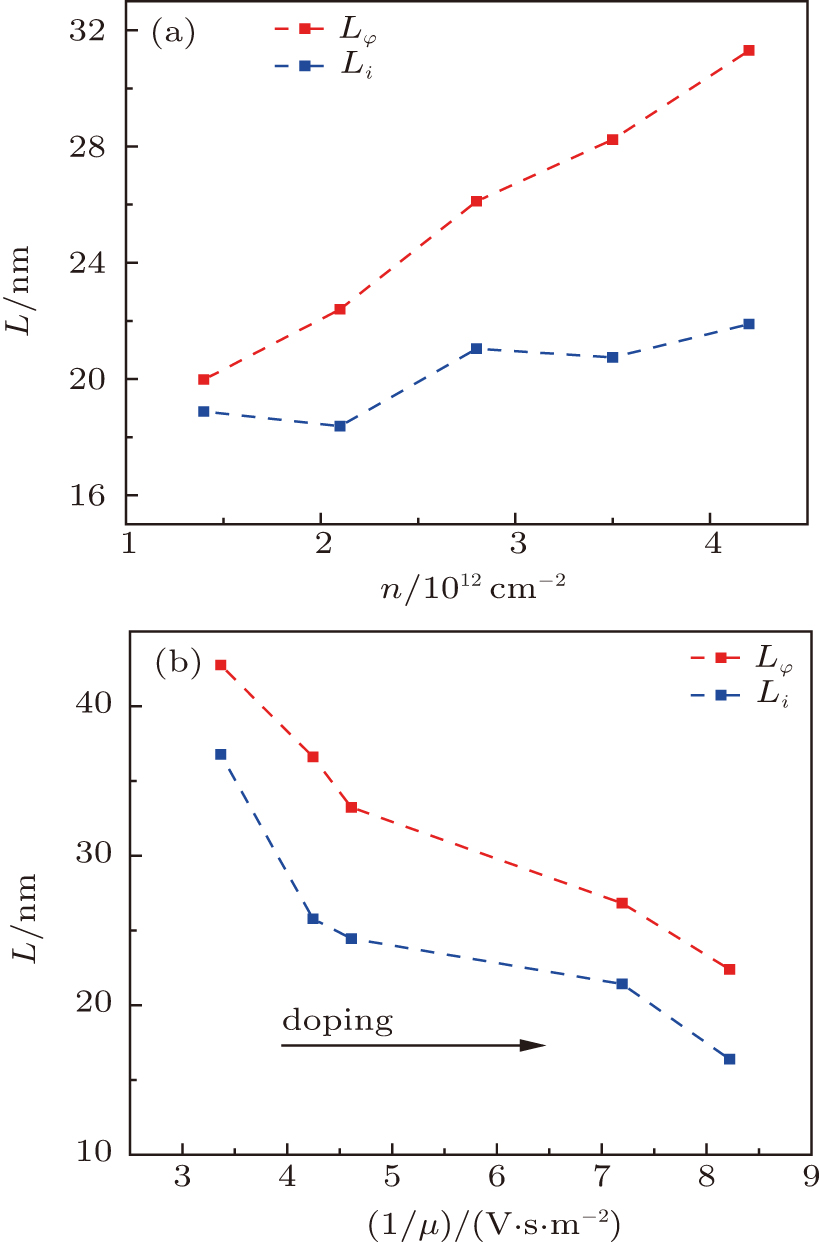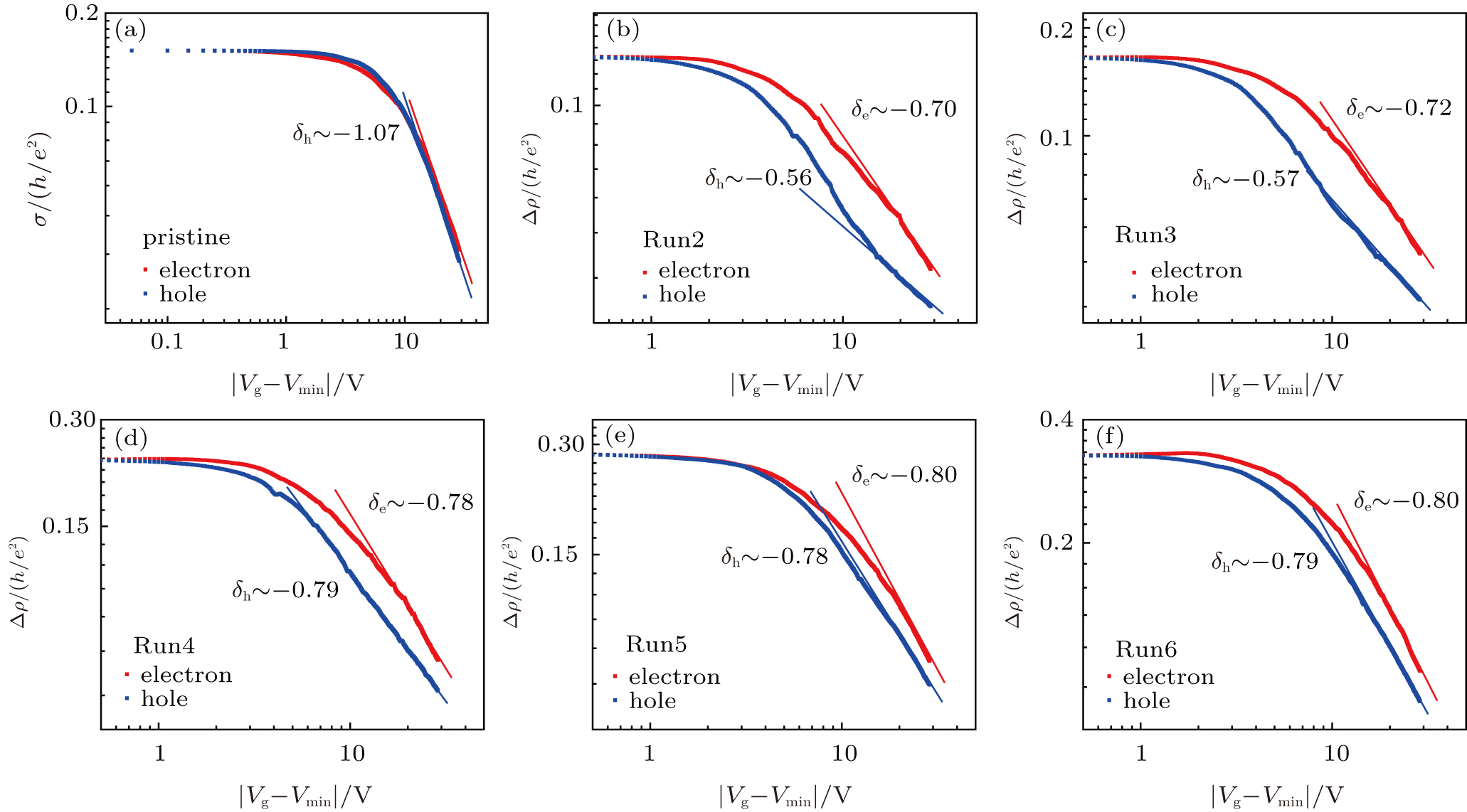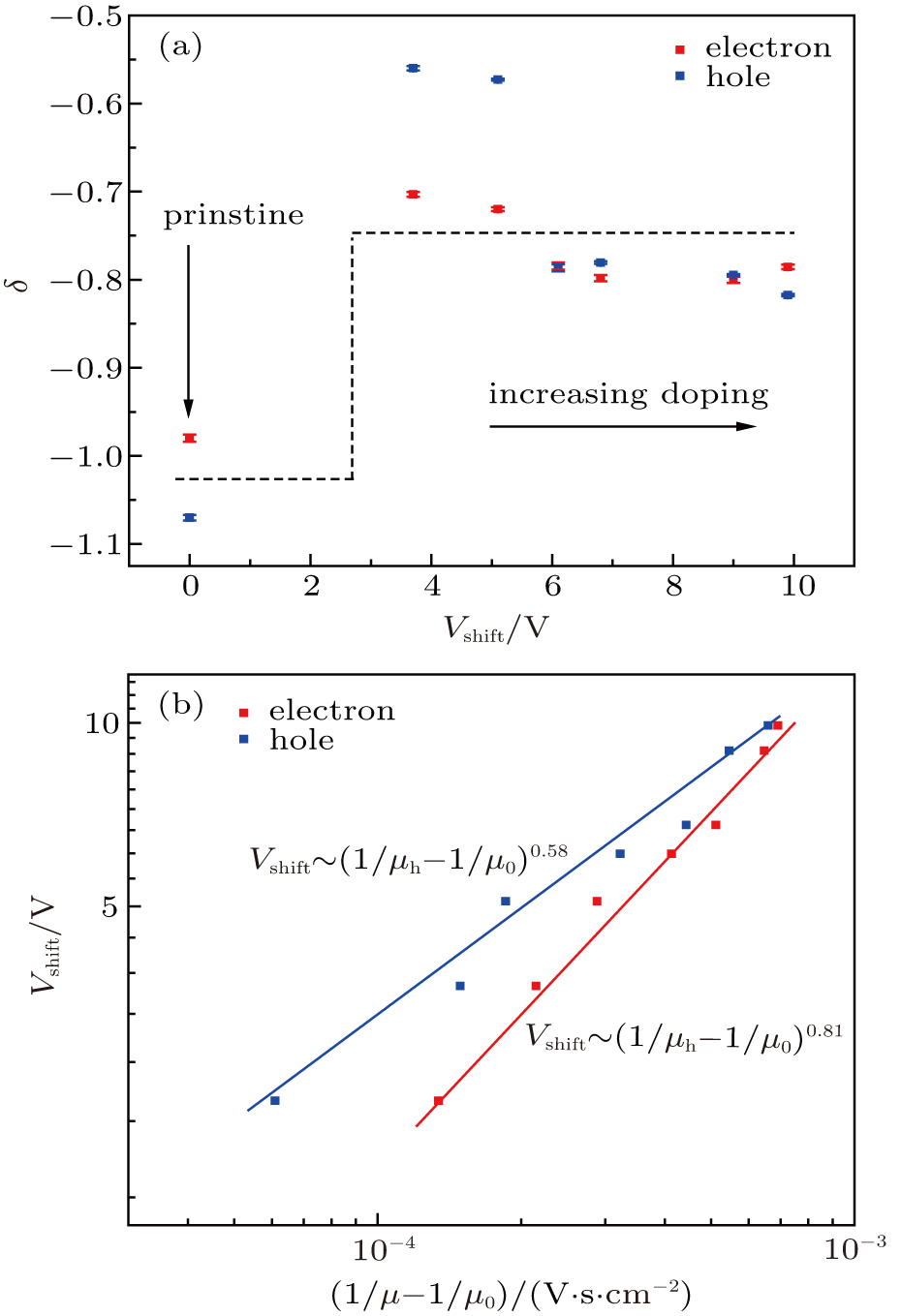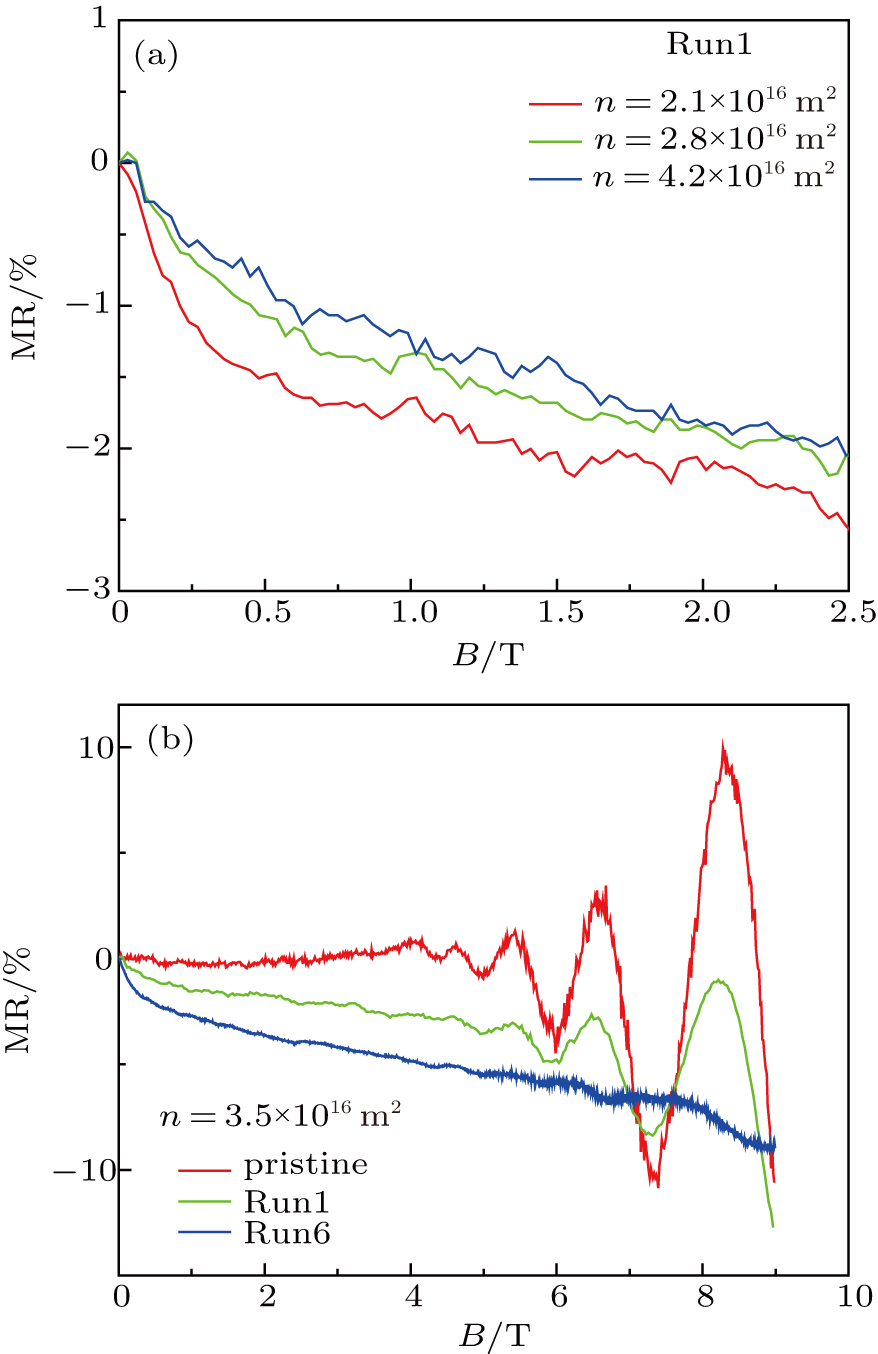Project supported by the National Basic Research Program of China (Grant Nos. 2013CB921900 and 2014CB920900), the National Natural Science Foundation of China (Grant No. 11374021), and the National Key Research and Development Program of China (Grant No. 2018YFA0305604).
Project supported by the National Basic Research Program of China (Grant Nos. 2013CB921900 and 2014CB920900), the National Natural Science Foundation of China (Grant No. 11374021), and the National Key Research and Development Program of China (Grant No. 2018YFA0305604).
† Corresponding author. E-mail:
Project supported by the National Basic Research Program of China (Grant Nos. 2013CB921900 and 2014CB920900), the National Natural Science Foundation of China (Grant No. 11374021), and the National Key Research and Development Program of China (Grant No. 2018YFA0305604).
Interactions of magnetic elements with graphene may lead to various electronic states that have potential applications. We report an in-situ experiment in which the quantum transport properties of graphene are measured with increasing cobalt coverage in continuous ultra-high vacuum environment. The results show that e-beam deposited cobalt forms clusters on the surface of graphene, even at low sample temperatures. Scattering of charge carriers by the absorbed cobalt clusters results in the disappearance of the Shubnikov–de Haas (SdH) oscillations and the appearance of negative magnetoresistance (MR) which shows no sign of saturation up to an applied magnetic field of 9 T. We propose that these observations could originate from quantum interference driven by cobalt disorder and can be explained by the weak localization theory.
The search for magnetic interactions in two-dimensional (2D) crystals has attracted significant attention.[1,2] The co-existence of magnetic and electronic properties in 2D crystals and heterostructures could have wide-range of applications in technologies such as data storage and computation.[3] In particular, the properties of hybrid structures consisting of non-magnetic 2D crystals and magnetic atoms are at the center of the research effort due to the potential tunability of such hybrid structures. However, interference from the environment makes it difficult to study the properties of such hybrid structures in an ex-situ experiment. In situ atomic engineering is a powerful tool to investigate the physical properties of 2D materials and their hybrid structures.[4–6]
Graphene, a single atomic layer of graphitic carbon, is a very promising platform to explore magnetism in two dimensions owing to its extraordinary physical properties including gate-tunable carrier concentration, high electronic mobility, and versatile interactions with absorbed species.[7–12] Although many previous studies proposed utilizing defects,[13,14] non in situ atomic treatment,[15–17] or proximity effect[18–20] to design graphene-based magnetic devices; clear experimental evidence of magnetism in a graphene device remains elusive. A previous theory[21] predicted that among the traditional ferromagnetic elements (Fe, Co, and Ni), only Co atoms can induce magnetism in graphene. However, although several Scanning Tunneling Microscopy (STM) experiments[22–24] for Co-decorated graphene on metal substrates have been reported, there exists no transport experiment for Co-decorated isolated graphene on an insulating substrate to show the presence of induced magnetism.
In this work, we performed in situ quantum transport measurement to study the effect of the electronic properties of Co-decorated graphene. The results show that when the cobalt atoms are deposited on the cold surface of graphene, clusters are naturally formed on the surface of graphene, which introduce both long-range and short-range scatterings on the surface of graphene. Negative magnetoresistance (MR) that does not saturate up to a magnetic field of 9 T has been observed. No transport signature of ferromagnetism has been found, although the possibility of induced paramagnetism cannot be excluded. We discuss the possible reasons for the absence of transport signature of ferromagnetism and the origin of the negative MR by comparing our results with the relevant theories and experiments. In addition, a metal-insulator transition driven by quantum interference is observed and may be related to the negative MR. These observations cannot be explained by the spin-half paramagnetism theory, variable range hopping (VRH) model, and the opening of an energy gap, but can be possibly explained by weak localization.
Graphene was mechanically exfoliated from a flake of Kish graphite onto 300-nm SiO2/Si substrates. Standard electron-beam lithography and metallization processes were used to make Hall bar structures. Electrodes were made of 5-nm Cr/50-nm Au and a four-wire configuration was used in the measurements. The device was then transferred into our homemade in situ quantum transport apparatus. The system consists of an ultra-high vacuum (UHV)-compatible, Gifford-McMahon (GM) cryocooler-based cryostat from Advanced Research Systems Co. Ltd., a dry 9-T solenoid magnet from Cryogenic Co. Ltd., and a special UHV chamber with surface modification apparatus. An e-beam evaporator was used in this experiment to produce high purity cobalt flux. Seven runs of cobalt deposition were conducted and the transport properties of graphene after each run were studied in situ. Continuous UHV environment was maintained during the whole process of deposition and measurement.
Figure
Figure
As scattering from single ions and clusters of charged impurities show a similar resistivity dependence on carrier density, it is important to investigate the relationship between the mobility (μ) and the shift in Dirac points (Vshift = |Vg,min − V0,min|) to determine whether these features described above are generated by scattering from single ions or from clusters of charged impurities. The addition of charged impurities will result in a shift of the Dirac point in graphene through the power-law relationship, Vshift ∼ (1/μ − 1/μ0)b, where μ0 is the mobility of the sample before Co-decoration. For random point-like charged impurities, each impurity contributes equally to doping and in providing scattering cross section, leading to Vshift ∝ 1/μ; however, for clusters of charged impurities, each impurity atom contributes equally to doping in a similar manner as in the case of random point-like impurities, but the scattering cross section per atom is significantly reduced and dependent on cluster size, leading to Vshift ∝ (1/μ)b, where b < 1.[26,29] The slope of the graph obtained by plotting the experimentally obtained Vshift versus 1/μ in a semi-log plot provides the value of the exponent b. Figure
Next, the temperature dependence of the resistivity at zero magnetic field was studied. It is well known that pristine graphene is highly conductive with a weakly temperature-dependent resistivity as shown in the inset of Fig.
We also note that even for the highest cobalt concentration, the resistivity of graphene at the Dirac point remains smaller than h/e2 at the lowest temperature of 7 K, increasing only twice compared to the resistivity of the Co-decorated sample at 300 K. Therefore, our data cannot be explained by 2D variable-range hopping (2D VRH). Besides, 2D VRH would be accompanied by a positive MR due to the shrinkage of electron wavefunction when the sample is subject to increasing perpendicular magnetic field,[34–36] which counters our experimental observation (shown in the next paragraph).
Now we focus our discussion on the transport properties of Co-decorated graphene under perpendicular magnetic field, in which non-saturating negative MR was observed. Figure
In disordered systems with sufficiently long electron dephasing length, time-reversal symmetric scattering paths could constructively interfere, leading to a logarithmic divergence in the resistivity of the sample with decreasing temperature,[38] an effect that is much more pronounced for 2D systems.[39,40] The Co-decorated graphene indeed shows logarithmic divergence in resistivity as shown in Fig.
 | Fig. 7. (color online) Characteristic length as a function of (a) carrier density and (b) 1/μ, respectively. Dashed lines are guides to the eyes. |
To understand the fact that Lφ and Li both decrease with increasing cobalt decoration and decreasing carrier concentration, one can make use of the concept of localization length without involving magnetic interactions. Even though a quantitative theory describing the localization length, ξ, in a weakly localized sample (e.g. Co-decorated graphene) is yet to be developed, ξ should be decreasing in a sample with increasing disorder (high cobalt concentration) and decreasing screening (lower carrier density). On the other hand, Lφ and Li should be bounded by ξ by definition. Thus, the trends shown in Fig.
One interesting finding in this experiment is that there is no sign of saturation of the negative MR even at a magnetic field of 9 T, which is relatively large for weak localization. A phenomenological explanation can be used to understand this. In the weak localization picture, the comparison between two length scales is critical. The first length is the phase coherence length, Lφ, and the other is the magnetic length, lB = (ħ/eB)1/2, which is the cyclotron radius of the electrons. The suppression of quantum interference in disordered systems happens approximately when Lφ > 2πlB, and when the resistivity of the sample recovers its classical value.[45,46] Since the upper bound of 2πlB = 2π(ħ/eB)1/2 = 53.8 nm at B = 9 T, which is still larger than Lφ, the appearance of the negative MR in the whole range of measurement is reasonable.
We have systematically studied the transport properties of cobalt-decorated graphene by in situ quantum transport measurements. We found that e-beam-evaporated cobalt formed clusters even on the cold surface of graphene and introduced both long-range and short-range scatterings. The Shubnikov-de Haas (SdH) oscillations disappeared with increasing cobalt coverage and no signature of ferromagnetism was been observed. Cobalt-decorated graphene exhibited a negative MR in perpendicular magnetic field and an insulating behavior with decreasing temperature. The above behavior can be explained well in the framework of weak localization caused by cobalt adsorption.
| [1] | |
| [2] | |
| [3] | |
| [4] | |
| [5] | |
| [6] | |
| [7] | |
| [8] | |
| [9] | |
| [10] | |
| [11] | |
| [12] | |
| [13] | |
| [14] | |
| [15] | |
| [16] | |
| [17] | |
| [18] | |
| [19] | |
| [20] | |
| [21] | |
| [22] | |
| [23] | |
| [24] | |
| [25] | |
| [26] | |
| [27] | |
| [28] | |
| [29] | |
| [30] | |
| [31] | |
| [32] | |
| [33] | |
| [34] | |
| [35] | |
| [36] | |
| [37] | |
| [38] | |
| [39] | |
| [40] | |
| [41] | |
| [42] | |
| [43] | |
| [44] | |
| [45] | |
| [46] |







